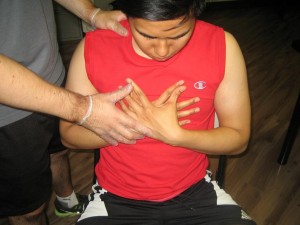Overview Of Angina
- Angina is uneasiness or pain in the chest that occurs when insufficient blood reaches the muscles surrounding the heart.
- Angina takes place when the coronary arteries become constricted or congested. At first, angina can be mild and gradually become worse or it might come on unexpectedly.
- Though angina is more prevalent with men who are older, it can take place in both genders and in all age groups.
Symptoms Of Angina

Angina generally feels like a persistent, burning or pressing ache in the chest. The pain is usually situated underneath the breastbone. The pain might extend toward the esophagus and into the jaw. The uneasiness may be experienced in the left arm and occasionally in both arms. Individuals with angina often get cold sweats. Further symptoms can consist of shortness of breath, dizziness and fainting.
GP’s split angina into two categories:
- Stable angina— Chest pain follows a precise pattern, taking place when somebody participates in physical activity. Physical activity during cold weather or after a big meal is more likely to cause angina. The symptoms should decrease once the individual relaxes.
- Unstable angina— Symptoms are less anticipated. This chest pain takes place when resting or while sleeping. The uneasiness might last for a while and can be rather intense. You should get medical assistance straightaway if this occurs.
Prevention Of Angina
- High blood pressure — Follow your GP’s recommendations when altering your diet and taking your medicine.
- Smoking— If you enjoy smoking, quit as soon as possible.
- Diabetes — Check your blood sugar level regularly, and take your medicine as your GP has prescribed.
Related Video On Angina
https://www.youtube.com/watch?v=edLDxdYOob4
